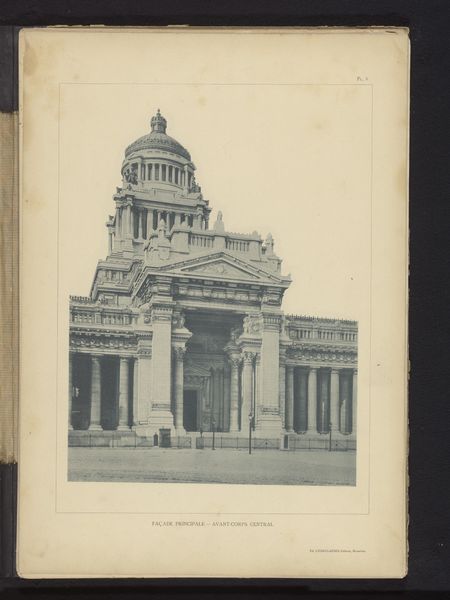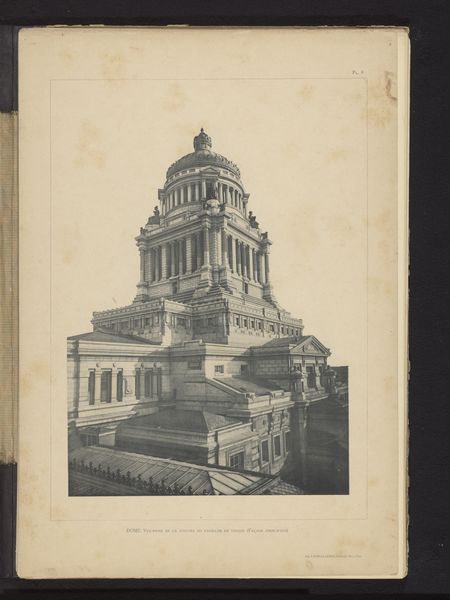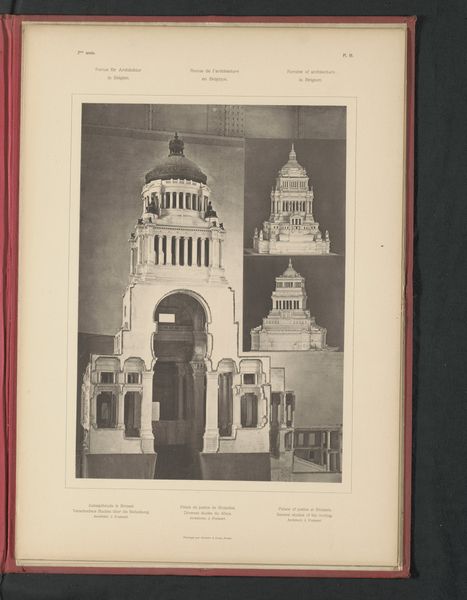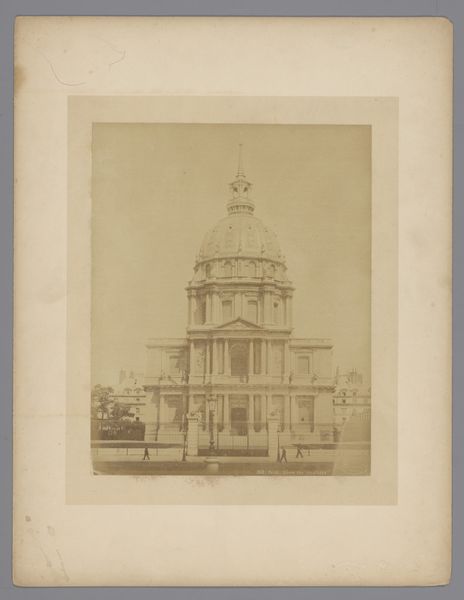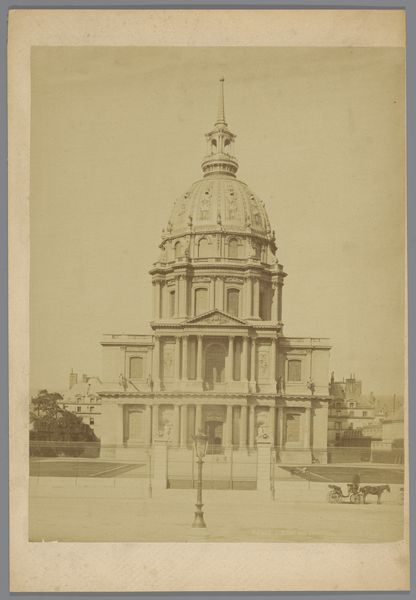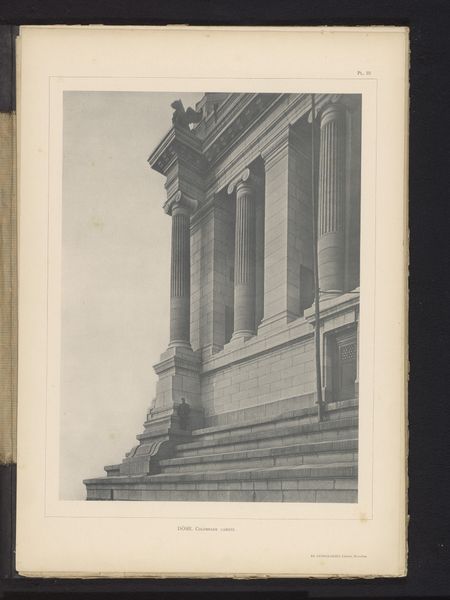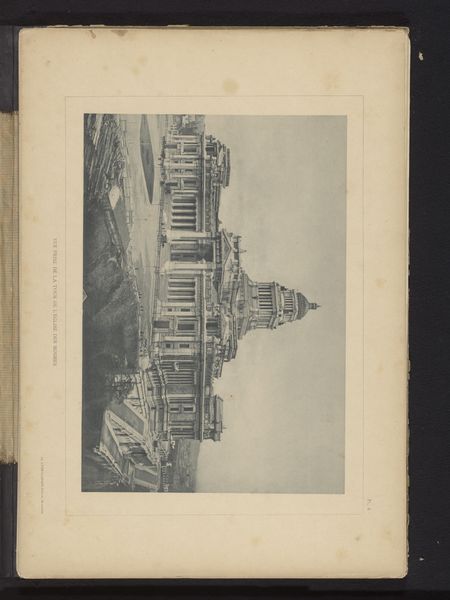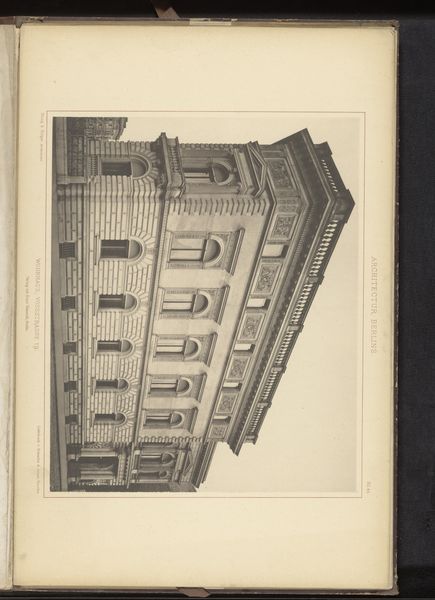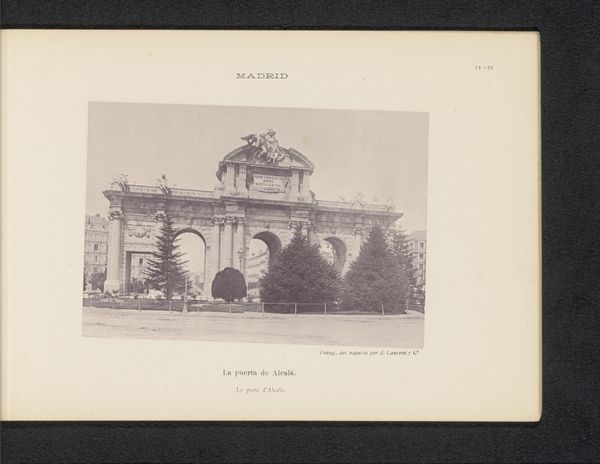
Dimensions: height 454 mm, width 320 mm
Copyright: Rijks Museum: Open Domain
Curator: Here we have an architectural drawing entitled "Three Views of the Palace of Justice in Brussels, Belgium," dating from before 1894, created by an anonymous artist. Editor: Immediately, I’m struck by the monumental, almost oppressive, sense of grandeur it projects, despite being rendered in relatively modest grey tones and seemingly simple print medium. Curator: Yes, the use of printmaking certainly serves to flatten the image somewhat, reducing depth. Still, there is something sublime here as the geometric volumes interact on the page: consider how the main facade in the foreground commands the lower register of the sheet. I am fascinated with how the anonymous artist conveys perspective, employing classical formalism, using a composition built around tripartite symmetry. Editor: Interesting—I see it differently. While it portrays a building, I cannot help but consider it from a construction perspective, wondering about the means of production inherent to the depicted building itself, such as labor or materials used in its actual creation. Printmaking as a medium feels distinctly appropriate because both this drawing and the Palace were inevitably borne through massive collaborative effort, rather than emerging purely from individual expression or a flash of singular inspiration. Curator: But observe how that main facade functions within a network of perspectival lines and neoclassical allusions! Those repeated columns, and overall rigid formality, create a specific impression of imposing authority, especially with its placement, so near to the viewer in this rendition, that overrides notions of collective labor or even the practical realities of assembly or raw supplies. Editor: However, it could be suggested that rendering this as a series of prints or drawings facilitates the efficient spread of architectural schematics across diverse, distributed communities involved with its making—from draftsmen to suppliers—democratizing access in the process. This removes much emphasis from high art by embedding itself firmly within the realms of labor. The very choice of medium reinforces accessibility and utility! Curator: Perhaps so. Though it also establishes the work within a representational regime governed by idealized forms and rational structure; and by using traditional visual schema, removes many indicators about how materials translate from extracted commodities into built environments shaped through concrete labor practices on work sites—as well the realities for diverse people directly involved throughout various aspects relating back even further still before the structure assumed built form decades past present… Editor: Well, whatever the motivations, seeing the materiality of artistic dissemination intertwined like this does encourage us think beyond simple aesthetic appreciation or stylistic convention, as processes echo outward throughout the whole image we engage within the frame regardless. So thanks for helping clarify it even more vividly. Curator: My pleasure—its rigid facade belies complex relations contained entirely under that grand cupola seemingly reaching towards the heavens… or perhaps elsewhere…?
Comments
No comments
Be the first to comment and join the conversation on the ultimate creative platform.
